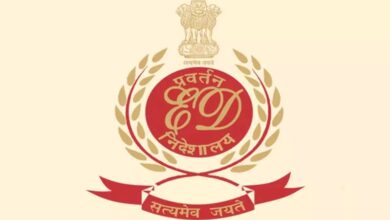Unified Pension Scheme: Key Benefits for Central Government Employees

News Mania Desk/Agnibeena Ghosh/25th August 2024
The Indian Cabinet has recently approved a new Unified Pension Scheme (UPS) for approximately 23 lakh central government employees. This significant policy move ensures that employees who have served for 25 years or more will receive a pension equal to 50 percent of their last drawn salary from the preceding 12 months. This pension will also include post-retirement adjustments linked to inflation, providing a steady and secure income for retirees.
The Cabinet Secretary-designate, TV Somanathan, announced that the UPS will officially take effect on April 1, 2025. Employees retiring by March 31, 2025, will benefit from the new scheme, including any arrears owed. Starting from the next financial year, employees will have the choice to opt for either the UPS or the National Pension System (NPS).
Under the UPS, retirees are assured of a fixed pension amount, a significant advantage compared to the NPS. Specifically, employees who have served for at least 25 years will receive a pension equivalent to 50 percent of their average basic pay from the last 12 months of service. For those with 10 to 25 years of service, the pension amount will be proportionately adjusted according to their length of service. The UPS also guarantees a minimum pension of ₹10,000 per month for employees with at least 10 years of service, ensuring a basic level of financial security for all retirees, particularly those in lower salary brackets.
In contrast, the NPS calculates pensions based on the returns generated from investments in debt and equity markets. This means that the pension amount under the NPS is not fixed and is subject to market fluctuations. Employees enrolled in the NPS contribute 10 percent of their basic salary, with the government adding 14 percent to the pension fund. Under the new UPS, the government’s contribution will increase to 18.5 percent, while the employee’s contribution will remain at 10 percent of their basic pay and dearness allowance (DA).
The UPS also provides substantial family security benefits. In the event of an employee’s death, their family will receive 60 percent of the employee’s pension, ensuring continued financial support for dependents. This contrasts with the NPS, where the family’s pension is based on the accumulated corpus in the pension fund and the annuity plan selected at retirement.
Additionally, the UPS will provide a lump-sum payment upon retirement, calculated based on a formula that considers one-tenth of the employee’s monthly emolument, including pay and DA, for every six months of service. NPS participants, however, can withdraw up to 60 percent of their total corpus at retirement, with the remaining 40 percent invested to provide monthly pension payments.
The UPS will be available exclusively to central government employees, while the NPS is accessible to both government and private sector employees, excluding those in the armed forces. This new scheme represents a significant shift in pension policy, aimed at providing greater financial stability and security for government employees in their retirement years.






